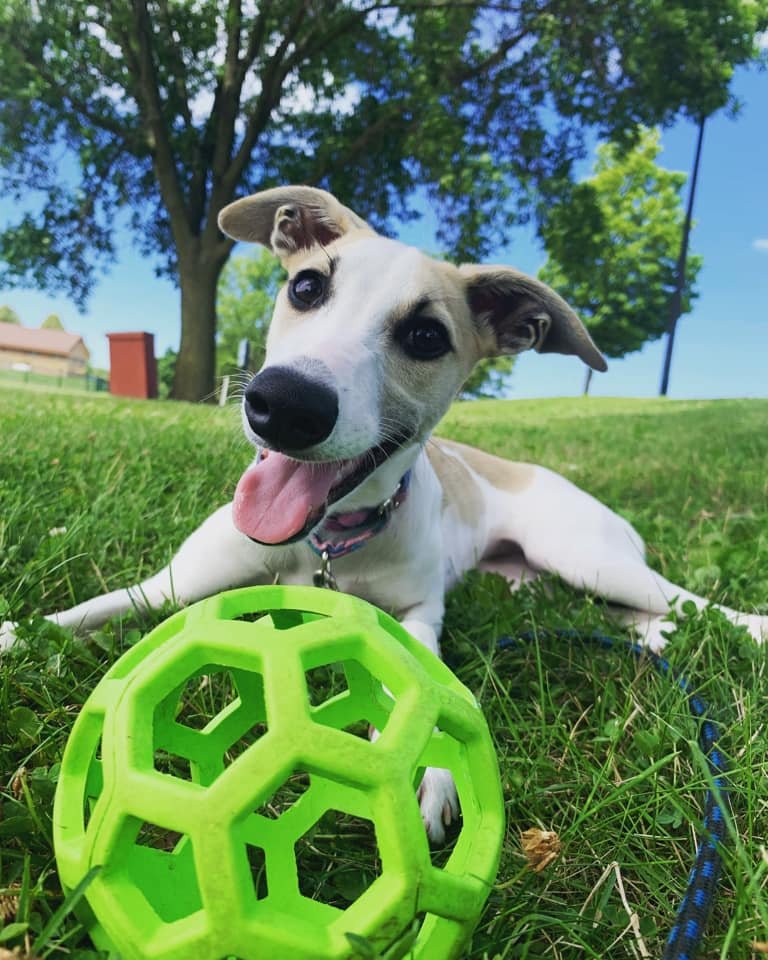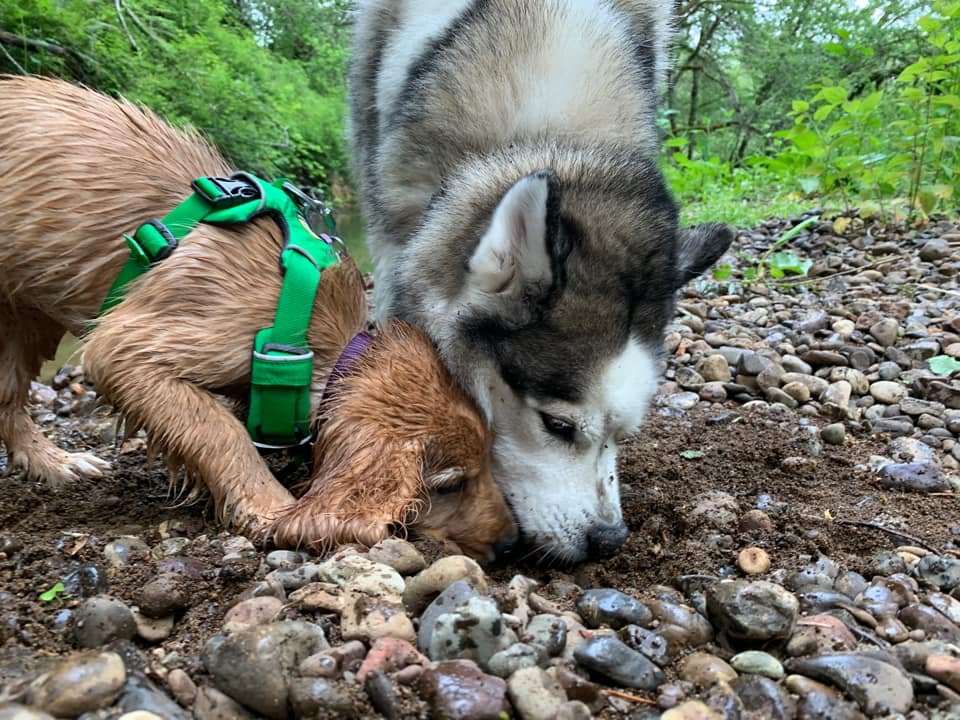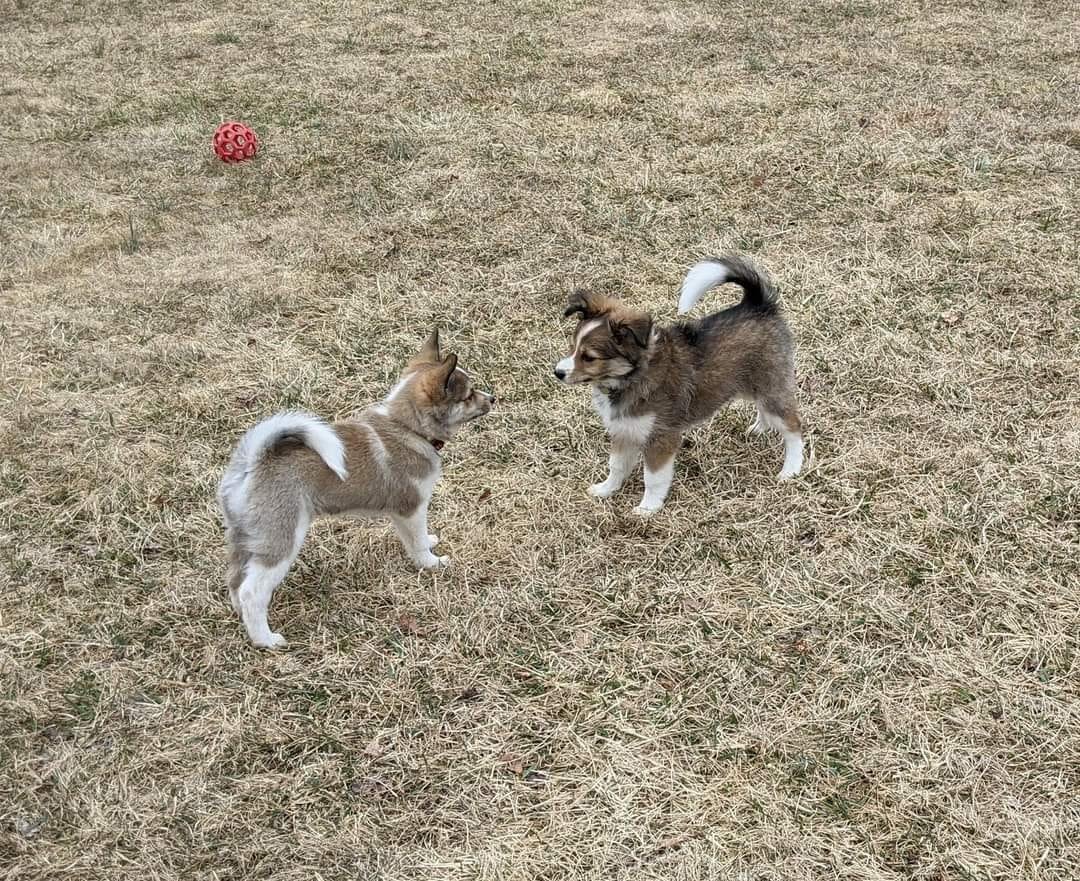How Much Exercise Do Dogs Need?
How much exercise do dogs need? Well, it depends on the dog! If your pup is bouncing off the walls or chewing on everything in sight, they might not need MORE exercise, but a different KIND of exercise.
“Back in the day,” most dogs did a lot of roaming. They spent all day outside, running around their neighborhoods, socializing with other dogs, and waiting for their people to get home. They did a lot of sniffing, digging, barking, chasing, and engaging in other extracurricular activities that are mostly frowned upon in modern society.
These days, our pet dogs spend most of their day indoors. This has cut down on the number of dog bites, unwanted litters, fights, and other mayhem, but it has some major downsides. For some dogs, the highlight of their day is mealtime and maybe some fetch in the yard or a walk. But is this enough exercise to meet their needs?
How Much Exercise Do Dogs Need? It Varies!
If you’re wondering if your dog needs more exercise, the answer is: it depends. When we ask “how much exercise do dogs need?” we should really be asking “how much exercise does MY dog need,” or better yet, “what KIND of exercise does my dog need?”
Our dogs are individuals. Their genetic blueprints and individual personalities determine their needs for activities like physical and mental exercise. For example, a border collie needs to scratch the herding itch. A Labrador Retriever loves nothing more than a game of fetch. A mixed breed might feel fulfilled by different activities, depending on their genetic makeup!
Some dogs are natural couch potatoes. Others could run for hours and still be ready for a game of fetch after a quick nap. When considering our dogs’ exercise needs, it’s important to understand and embrace their individuality.
It’s also important to remember that every dog should learn how to settle at home when they need to, as long as you’re meeting their needs regularly. Dogs need to be okay with some downtime!
Is a “Tired Dog a Good Dog”?
Maybe you’ve heard the saying “a tired dog is a good dog.” While yes, your pup is less likely to eat your couch if they’re napping, it’s more accurate to say that “a fulfilled dog is a good dog.” When asking “how much exercise do dogs need?” it’s important to make the definition of exercise broader.
Dogs need a mix of activities for their personal fulfillment, and some have higher levels of needs than others. When dogs are fulfilled, they experience less frustration and stress and are probably going to meet our human definition of a “good” dog more often. Let’s take a look at the different types of activities and their roles in canine fulfillment.
Physical Exercise
Physical exercise is the simplest type of activity. Dogs get their physical exercise from running, jumping, playing, and swimming. Some activities are purely physical, while others incorporate more mental engagement, such as running after prey or sniffing on an off-leash hike. Social exercise, like playing with other dogs, can also be a fulfilling type of physical exercise for social butterflies.
Getting enough physical exercise is important for our dogs’ overall health and well-being. However, if your dog is already getting an adequate amount of physical exercise and they are still worked up, frustrated, or destructive, then they probably don’t need even more exercise for overall fulfillment.
Mental Exercise
You might have heard that mental exercise can be more tiring for dogs than physical exercise, which is definitely true. Most dogs will be ready for a nap after they work on learning a new skill or spend some time sniffing and processing a new environment.
If you have a dog with energy to spare and you struggle to fulfill their needs with more exercise, consider adding some mental exercise into the mix. Give them a job!
Even if you never want to compete in trials, dog sports can be a great way to channel your dog’s energy in a positive direction and build your bond. Nosework, agility, rally, obedience, herding, treibball–the list goes on and on. Think about your dog’s genetic blueprint and personal preferences when choosing a class.
Does your pup spend five minutes sniffing each solitary blade of grass on your walks? Try nosework! Are they constantly scrambling up boulders when you go hiking? They might be a candidate for agility! Is their favorite thing in the world sticking right by your side? Maybe rally is the perfect activity.
Some activities fulfill both physical and mental exercise at once, such as agility. It’s a physically demanding sport, but it also requires the dog to think and connect with their handler. Participating in these kinds of sports can also be great for building confidence and trust!
Although dog sports can be ideal for high-energy pups, you don’t necessarily have to invest in a class to give your dog more mental exercise. When you take your daily walks, let them lead the experience. Let them sniff to their heart’s content. Switch up your route so they’re exploring different smells.
Short training sessions can also be a great way to work your pup’s brain and help fulfill their needs. Before work, why not work on a new trick or skill? Then, before dinner, grab some treats and add another quick session. Most dogs don’t have the endurance for more than a few minutes of training at a time, so it’s usually not difficult to find a few opportunities throughout the day for training.
Enrichment
Enrichment has become a trendy buzzword lately, but it’s for a good reason: enrichment can help meet your dog’s needs so that you can enjoy a happy and harmonious life. Examples of enrichment activities include puzzle toys, shredding, sniffing, and digging.
Generally, enrichment activities mimic natural dog behavior and are dog-led. Your dog gets the pleasure of deciding exactly how they’d like to tear up that cardboard box!
Enrichment can be extremely fulfilling for our dogs, and it’s often low-effort for us humans. That’s great news! Although you can’t use enrichment to meet all your dog’s needs, it’s part of the puzzle and can help give you a much-needed break when you need it.
If You’re Experiencing Behavior Problems, Don’t Double Down
If a puppy or dog is exhibiting unwanted behavior, it’s common for people to just do more of what they’re already doing to tire the dog out. More fetch, more leashed jogs around the neighborhood, or other forms of physical exercise. Unfortunately, this is only a short-term solution. Eventually, your dog will gain more endurance, and it will take more and more exercise to tire them out.
Instead of doubling down on what you’re already doing, think about changing the type of exercise you’re offering or improving the quality of the time you spend with your dog. If you walk your dog in your neighborhood, for instance, do you rush them along? Or do you give them a chance to sniff and tire their brains out from processing the world around them?
If your dog isn’t getting much out of neighborhood walks, could you take them to a nearby trail? Or, could you budget some extra time to let them sniff to their heart’s content? There are ways to change what you’re doing in a way that doesn’t require more time or expense.
Designing an Exercise Plan for Your Dog
If your dog isn’t fulfilled by what you’re currently doing, then it’s probably time to mix things up. Here’s how you can design an exercise plan that meets your dog’s unique needs.
1. Think about what you’re already doing
Assess how much time you’re spending on meeting your dog’s exercise needs and think about what you’re doing with that time. Are there opportunities for more fulfilling activities? Are there opportunities for improvement? Getting an idea of where you are will be important for making meaningful changes.
2. Factor in your dog’s age, limitations, and your schedule
Age and physical limitations are important factors in your exercise plan. If your dog has special mobility needs, adapt your plan according to what they can do physically. It’s always a good idea to talk to your vet about what’s safe and what isn’t if your dog has any physical limitations.
Dogs who are older or have been injured in the past might not be able to engage in every activity. Young puppies are still growing and shouldn’t do high-impact, human-led activities like going for a run on the sidewalk or doing agility classes.
If your puppy is out of control, it’s important to realize that they might just be tired and need a nap. Often, overtired puppies become more wired until they finally crash. Make sure your puppy is getting enough sleep (up to 20 hours a day for very young puppies!) in addition to meeting their other needs. Adolescents go through fear periods and other “fun” behavioral phases that might affect your plans and require some creativity.
You should also make sure your plan fits into your schedule so that you’re not stressed out about how you’re going to keep your dog exercised. Your needs matter too!
3. Consider your dog’s favorite activities
When you’re thinking about making a change, think about what your dog actually likes instead of what “dogs” like. Some dogs, for example, love playing with other dogs at the dog park, while others would rather keep to themselves and go on a solo hike with you. Brainstorm your dog’s perfect day and use that as a guide for what you should add or subtract from your activities.
4. Make one change at a time
If you’re overhauling your activities with your dog, you don’t need to change everything at once. Adding or changing one thing at a time will help you really see the impact of each activity and will make it easier to evaluate what is the most fulfilling for your dog.
5. Put it on the schedule and give yourself reminders
We all have good intentions, but most of us are also insanely busy. It’s easy to just throw a frozen toy in the crate, but it’s also important to have quality time together for exercise and fulfillment. Put these activities on the schedule so that they don’t fall by the wayside.
Another way to make sure you’re fulfilling your dog is to leave yourself reminders. Put a bag of treats in your dog’s food container so you can do a little training before breakfast or dinner. Keep your long line in the car so it’s easier to pack up for a hike. Make a checklist for yourself. Find something that works for you!
6. Reevaluate as needed
Be ready to change your plan as needed. Your dog might communicate that they’re not really into a given activity, or their preferences might change. You might also want to switch up your activities more often for dogs that love variety.
Meeting Needs is an Ongoing Project
Like us, our dogs have needs for things like exercise, social interaction, and mental fulfillment. How we meet those needs can change over time, and it’s important to look at the process as an ongoing project.
If you’re frustrated with your high-energy dog, take a step back and breathe. Try a different approach to exercise and enrichment. Find activities that you and your puppy or dog can enjoy together!
Need more guidance on meeting your dog’s needs? SuperPup Academy offers foundation classes designed to help you understand your puppy and live your best life together. Check out our courses or sign up for our Patreon to join in on study halls and discussions with our instructors!
Disclaimer: For serious behavioral problems or sudden changes in behavior, please reach out to a vet and/or behaviorist. Your dog might need medication, behavior modification, pain management, or a combination of approaches. Don’t just assume that they need more exercise, and remember that many behavioral issues are rooted in genetics; you didn’t break your dog!




